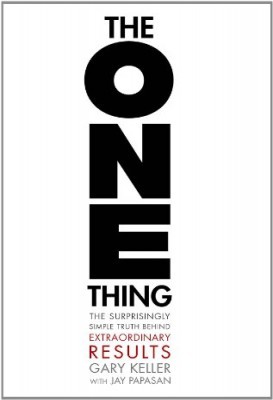April 18, 2013, 10:45 p.m. ET
Luxury Slumps in Switzerland
A glut of high-end developments and shrinking employment in the banking industry have led to a downturn in the upscale real-estate market; slow sales at the Löwenbräu high-rise
Mobimo Tower is a luxury high-rise with units priced between $1.4 million and $7.4 million. After two years, about one-third of the residences remain unsold.
By MARTA FALCONI
When Mobimo Holding AG MOBN.EB +0.48% opened a 24-story luxury tower in one of Zurich’s trendiest neighborhoods, Chief Executive Christoph Caviezel expected the building’s glitzy condominiums to sell fast.
Snapshot: Zurich
- Population: 380,500
- Cost of living: Switzerland is currently experiencing mild deflation. Prices fell on average 0.7% in 2012, compared with a gain of 0.2% the year before.
- Average high-low temperatures: January: 37.8°/26.4°F July: 77°/55°F
- Biggest deal: Two detached houses sold for more than $32 million apiece last year.
- Notable neighbors: Singer Tina Turner lives along the Gold Coast of Lake Zurich. Swiss bank UBS board member Rainer-Marc Frey reportedly bought a condo in the Mobimo Tower.
- Conversation pieces: Zurich West, where the Mobimo Tower and the Löwenbräu high-rise were built, was formerly the city’s industrial center. Now it’s peppered with bars, restaurants and boutiques. Cultural events are often hosted in refurbished industrial sites. The Gold Coast along Lake Zurich has lured wealthy residents drawn to its quiet neighborhoods and stunning water views. The area got its nickname from the evening sunshine that bathes the area year-round.
Two years later, a third of the Mobimo Tower’s 53 units remain unsold even though they sport panoramic views, high-end fixtures and access to an on-site health club. Mobimo hopes the condominiums, which reportedly cost between 1.3 million and 7 million Swiss francs ($1.4 million and $7.4 million), will be sold by the end of 2014, a year later than previously expected.
Poor sales at the $268 million tower, its flagship property, have prompted the Lucerne, Switzerland-based developer to scrap plans for a similar luxury complex on the shores of Lake Zurich. Mobimo has already sold the land earmarked for that development, which was planned for a sun-splashed area dubbed the Gold Coast.
“It makes no sense to build more apartments in the high-price range,” Mr. Caviezel said in an interview.
Mobimo and other Swiss developers have been caught by a sudden swing in Zurich’s real-estate market. A glut of high-end developments and shrinking employment in the banking industry have hit high-end real estate hard. Efforts by the central bank, which began requiring banks in February to put an additional 1% of mortgage-related exposures aside as part of a capital cushion, are also weighing on the market. The Swiss franc is little changed compared with other currencies.
The shift has come fast for Zurich, which has been among the world’s most buoyant markets for several years. Historically low interest rates—about 1.5% for a five-year, fixed-rate mortgage—and an influx of wealthy foreigners helped push prices of upscale condominiums to nearly $2,000 per square foot, according to analysts at Credit Suisse CSGN.VX +1.03% . Confident that prices would keep rising, buyers often committed to purchases before construction of a site was completed.
Now condominium prices in the canton of Zurich, which houses Switzerland’s biggest city and the country’s financial hub, are slowing. Condo prices rose 6.5% last year, but that was down from 9.4% the previous year and 7.1% in 2010, according to Wüest & Partner, a property consultant. Analysts at Credit Suisse say price growth will “slow considerably” this year, although it will remain positive.
Properties listed for $2 million or more stayed on the market for more than 90 days in the fourth quarter of 2012, compared with more than 60 days in the third quarter, according to Wüest & Partner.
“The golden times of the last two or three years are gone now,” said Thomas Rieder, a senior economist at Credit Suisse, who says slimmer paychecks in the financial industry have weighed on the market. “It’s not so easy anymore to sell property at any price you want.”
PSP Swiss Property, PSPN.EB +0.96%a Zug-based developer, is also struggling to complete sales in its Löwenbräu high-rise, a 20-story tower built on the site of a former brewery and just down the road from the Mobimo Tower.
Though sales opened nearly three years ago, roughly 22% of the complex’s 58 units remain empty. PSP even chopped the tower’s glamorous 6,028-square-foot penthouse in two, hoping the smaller units would be easier to sell. So far, neither of the condominiums has found a buyer.
PSP CEO Luciano Gabriel said his company wasn’t planning to cut prices yet but acknowledged prices in the luxury segment have been “not very realistic.” PSP is shifting back to commercial developments, its historic strength.
Allreal, ALLN.EB +0.90% a developer with commercial and residential properties in the greater Zurich area, is also changing tack, moving back to the midlevel residential market after a luxury project overlooking Lake Zurich struggled to attract buyers. Just seven of the project’s 23 units have sold, despite a desirable location in the leafy village of Meilen, about 10 miles outside of the city center.
“Looking back a few years, such a project would have been sold out in no time,” said Matthias Meier, a company spokesman. Allreal also has another luxury project along the shore of the lake that will be completed in 2014. Prices for condos there go from about $1.4 million to $5.2 million.
Mobimo, too, is refocusing on projects that will appeal to middle-class Swiss families, a move that means a lower price point. The company is working on a complex of 50 apartments in Zurich that will likely sell at about $1,000 per square foot, roughly half the price tag for luxury developments.
Mr. Caviezel, the Mobimo chief executive, says he’s bracing for a more challenging environment. With tighter credit and fewer high-paid banking jobs, he says it will take longer for the company to sell out its big projects. Amid regulatory changes in the banking industry, UBS, UBSN.VX +3.23% the country’s biggest bank by assets, has reported that its head count in Switzerland fell to about 22,400 as of the end of last year, from roughly 23,200 in 2011. Credit Suisse, too, has cut jobs as it restructures its operations, reducing head count world-wide by 2,300 jobs during past year.
“We’ve been a little bit spoiled in the past, with apartments that could be sold even before they were finished,” said Mr. Caviezel. “Now it takes more time.”








